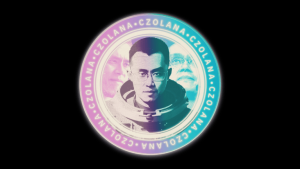Key Insights
- Identity and decentralized social (DeSoc) graphs can help decentralized autonomous organizations (DAOs) improve their data and workflows. These tools leverage the blockchain as a central database, increasing transparency, data consistency, and availability.
- These on-chain tools can help disrupt traditional information flows in organizations by allowing DAOs to collect granular data that transcends the limitations of traditional organizations and current DAO tools.
- Integrating crypto-native tooling will increase DAO accountability by open-sourcing the availability of organizational insights. Transparency includes the opportunity for contributor dashboards, objective tracking, and more innovative use cases, including service provider accountability, crowd-sourced consensus, and contributor mining.
Introduction
Decentralized autonomous organizations (DAOs) aim to extend the inherent qualities of on-chain protocols (permissionless, decentralized, open-source) to their governing entities. While blockchains protect against external entities (censorship, de-platforming, etc.), DAOs protect organizations from internal threats (malicious actors, fraud, etc.). DAOs exist autonomously, overseeing internal capital and harnessing internal capital to reward activities. DAOs are purposefully structured without central organization, creating a complex tradeoff between the resilience of decentralized entities and the efficiency of centralized entities.
Traditional organizations rely on authoritative leadership to establish objectives and oversee operations. However, DAOs require alignment between service providers, subDAOs, contributors, and stakeholders before taking action. Additionally, because DAOs operate in a decentralized and asynchronous manner, they’re often unable to derive insight into the contributions of their contributors, stakeholders, and operations. Most DAOs are highly fragmented and inefficient.
DAOs embrace decentralization at the expense of collecting and analyzing metrics on operational health. To improve their functionality, they must explore a new suite of identity and decentralized social (DeSoc) graph products that can illuminate their blind spots while upholding their values. These tools improve the resilience of DAOs by promising to infuse DAO operations with blockchain data.
The Data Problem
The current DAO stack comprises numerous platforms with independent data structures, warehousing, user identification, and management. To understand their contributors, workflows, and operations, DAOs must collect and reconcile data across many tools like Discord, Twitter, Snapshot, and Discourse. These fractured operations lead to fractured information.
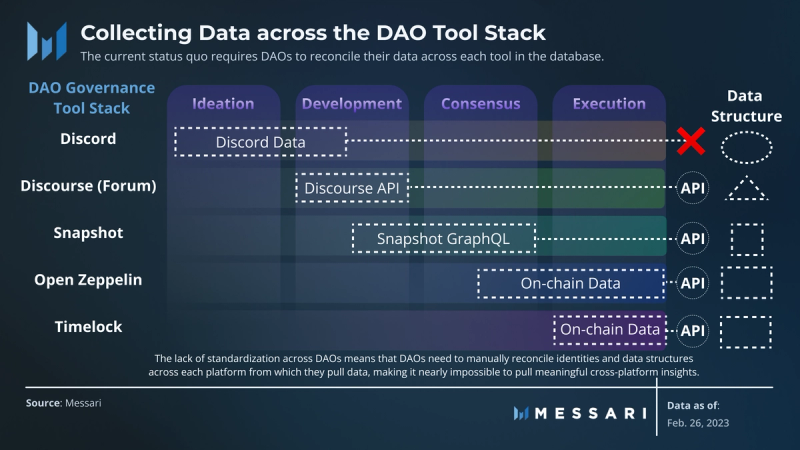
Information can be difficult to acquire even when data is available due to a lack of infrastructure, admin permissions, and paid service models. In addition, the data is often incompatible as users identify themselves with their email, username, wallet address, and social handles across many platforms, which are nearly impossible to connect.
In contrast, an on-chain DAO stack would allow open-source, permissionless, and composable applications to leverage one core database: the blockchain. This section explores a new organizational toolset that integrates two essential primitives: identity and social graphs.
Identity: Wallets, Identity, Reputation, and Attestation
A glaring blind spot of DAO operations is its ability to measure impact. The incompatibility of the current DAO stack results in a fractured contributor identity. But on-chain identity can overcome this deficiency by using a single credential to deliver a user’s entire identity (on- and off-chain) across the entire DAO tool stack. Once standardized, DAOs can use these identities to indicate authority, dictate how that authority is exercised, and endow further authority to valued stakeholders.
On-chain identity is broad, and its concepts transcend several areas of blockchain technology. It can be broadly observed across four identity primitives: wallets, identity tokens, reputation tokens, and attestations.
Wallets
Wallets serve as a custody mechanism for digital assets. They denote qualitative and quantitative characteristics by providing read-only access to their holdings. Because wallets store each contributor’s tokens, a wallet’s address can be used as an identifier for stakeholders engaging anywhere in the DAO process.
In a well-designed DAO, wallets allow stakeholders to carry their identity across all four phases of governance by using “Connect Wallet” or Sign in With Ethereum (SIWE) to facilitate their interactions. In turn, the wallet allows each contributor’s token holdings to be readable by each application, allowing the DAO to create codified authentication throughout its governance.
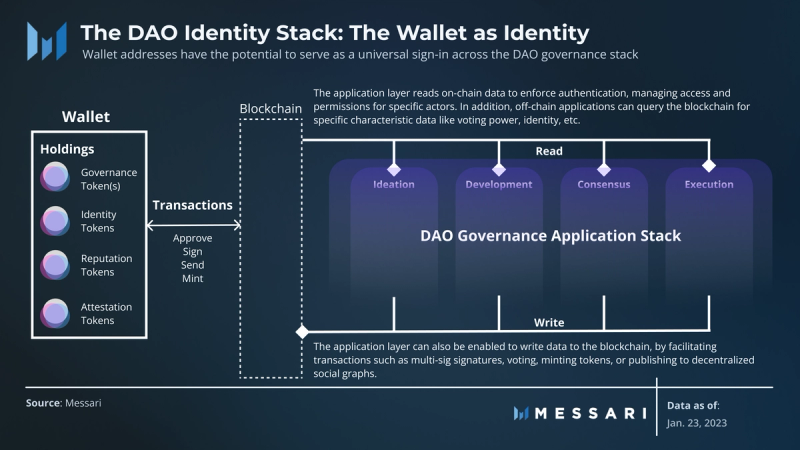
A wallet’s defining identity feature is its ability to write to the blockchain via signatures and transactions. DAOs can harness this read-and-write information flow to develop systems encouraging constructive behavior.
Once adopted, new experiments with wallet identities can leverage the DAO’s license to provide data permissions, authority, and influence to reward beneficial actors to the ecosystem and deter parasitic actors. For example, a DAO may reward a contributor with a knack for facilitating partnership opportunities. It could use governance to grant said contributor with recognized governance permissions, such as the ability to publish on-chain proposals directly or the benefit of boosted governance power.
Identity Tokens
Identity tokens are used to verify a user’s data, credentials, and information in a trustless manner. Many identity tokens exist today, including ENS domains, Gitcoin Passport, and Proof-of-Humanity. DAOs use identity tokens to verify information from individuals, entities, and stakeholders. Identity tokens can play a valuable role in protecting against various attacks, including Sybil resistance and regulations (KYC) — all without requiring the DAO or a centralized third party to collect this information.
For contributors, identity tokens provide both a social and practical use case. DAO members can observe these identities on forums, social apps, and voting contracts.
Reputation Tokens
Reputation tokens describe a user’s status, on-chain contributions, or characteristics. These tokens can denote actors of a particular status (investor, core team, delegate, council member, developer, etc.) and on-chain activity (previous voter, Tornado Cash depositors). Reputation tokens can create robust organizational metadata that DAOs can mine for operational insights. One example is the application of soulbound (non-transferable) tokens used by the Optimism Citizen House. These tokens don’t represent identity but signal permission and status by allowing Citizen House tokenholders to distribute Retroactive Public Goods Funding.
Reputation tokens are broad and can also be used as a type of reward currency, denoting status as a contributor or trustworthy grant recipient. For example, Pocket DAO’s Proof-of-Participation model only functions by granting governance power to members who have completed DAO-specific quests.
Attestations
Attestations describe claims about an agent made by other agents. They provide on-chain proof that attests to a qualifying condition at a particular time. Attestations prescribe accountability and, at their best, function as proof that a particular action has occurred.
Proof-of-Attendance-Protocol (POAP) shows that an individual was present at a specific place and time by scanning a QR code. Optimism has also integrated attestations for its community via the AttestationStation smart contract. Attestations could be particularly useful in contributor cases, where DAO members, authorities, or even external parties can attest to one’s actions in a particular process or proposal.
The On-Chain Identity Stack
Together, these primitives form an on-chain identity stack and create new opportunities for contributors to receive recognition and status and to express their authority. These token types paint a comprehensive picture of a DAO’s components. As each wallet votes, delegates, transacts, and interacts with on-chain contracts, each on-chain transaction becomes a breadcrumb, assembling a queryable data layer that the DAO can mine for insights.

DAOs can leverage this data layer as a middle ground between contributors and the organization, allowing for more granular analysis of operations and compensation. In addition, the blockchain is open for anybody to read, which invites third-party dashboards, research, and transparency. These dashboards can excavate contributor behavior, gain insight into business development, vet partnerships, and suggest new organizational designs. This increased transparency may be jarring initially, but abolishing information asymmetries is essential for decentralized organizations to defend accountability.
The Decentralized Social Graph
Beyond identity, decentralized social protocols promise to bring the same social graphs that power the world’s largest social networks (Facebook, Twitter, and Instagram) to open-source infrastructure. DeSoc protocols enable public access to previously unobtainable social data, which has various implications for DAO governance.
Lens Protocol Case Study
Lens Protocol applies traditional social network architecture to create new social networks on the blockchain. They use transactions and signatures to store social data on blockchains and decentralized storage networks like IPFS and Arweave.
Lens is built with three core ERC-721 NFT contracts: ProfileNFT, FollowNFT, and CollectNFT. These tokens interact with standalone contracts called modules, which allow Lens users to follow, publish, collect, and comment on publications (made by ProfileNFTs). Because interactions are logged on-chain, developers can use this social graph to build new algorithms and create new front ends to display the data.
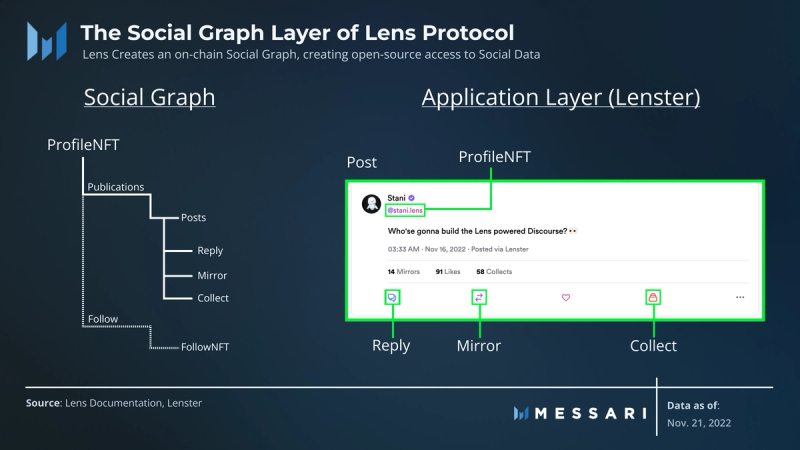
The Lens contract is upgradeable and is building further protocol-specific governance logic. Lens has teased further governance primitives such as Lens Multisigs, proposals, and recently announced token-gating for content and communities. In theory, these additions open the door for a complete governance design using the Lens SDK. If Lens can provide the ability to discuss proposals, achieve consensus, and execute DAO transactions from a single platform, it would likely be the first full-service DAO tool.
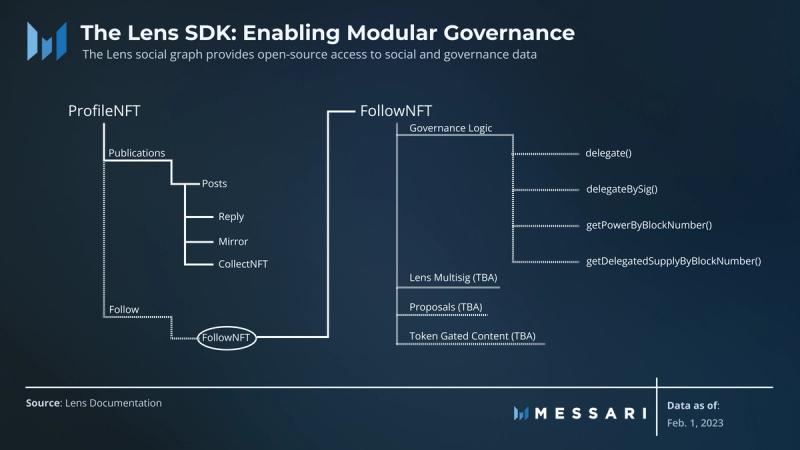
Current DAO operations occur across many social protocols, including Discord, Discourse, and Twitter. Using a DeSoc protocol like Lens for their forum, DAOs could track their organization’s debates, contributions, and consensus processes. They would have access to information across a proposal’s lifespan, from ideation to maturity and potentially through consensus to execution.
Exploring Use Cases For DAO Data
The social graph layer creates the infrastructure for on-chain social networks, and the identity layer allows users to navigate these social networks. In the context of a DAO, this combination would facilitate a fully queryable network layer, which is inaccessible today.
Imagine your organization’s Slack channels, emails, presentations, and decision-making processes publicly available and queryable. Although the lack of privacy would be intimidating, the transparency would also level the information playing field for everyone. Further, on-chain forums using this technology will ultimately be able to configure their privacy settings according to their comfort using encrypted messages with XMTP and token-gated publications. Token-gated publications can leverage reputation, identity, and attestation tokens to predetermine access. They could also set levels of transparency dependent on authority, membership, status, and trust.
Compared to traditional top-down organizational structures, which collect information from managerial levels, DAOs often aggregate information at the process level when data is available. They can pull information from each governance stage, whether from a forum, GraphQL, APIs, or the blockchain. By disrupting traditional information flows with identity and DeSoc, DAOs can collect granular data that transcends the limitations of power structures (traditional organizations) and processes (current DAOs).
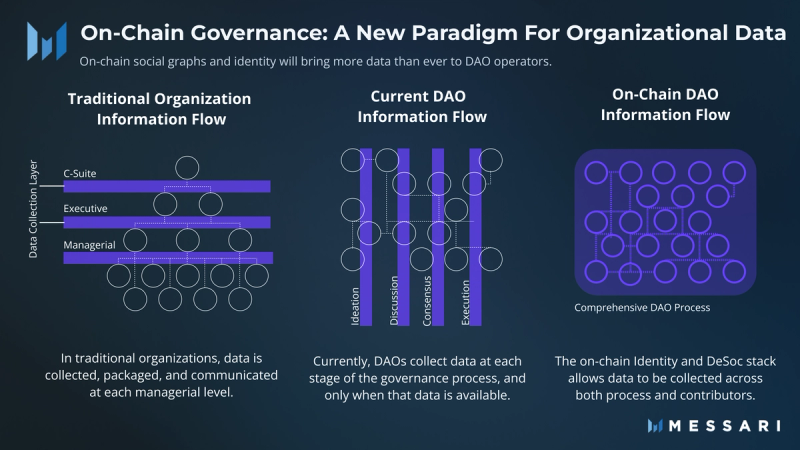
This new approach to organizational information might avoid managerial bloat by using data to uncover talent directly based on contribution. DAOs can also use publications to track ideas throughout the proposal lifecycle. They could then gauge sentiment more easily, attribute contributions to those ideas, and gain insight into process blockers between traditional governance stages.
The implications of open-source organizational data for DAOs are largely speculative, but the resulting data composability introduces a few exciting case studies worth exploring. Beyond the apparent benefits of accountability, contributor dashboards, and accurate tracking, some interesting use cases include service provider accountability, crowd-sourced consensus, and contributor mining.
Service Provider Accountability
The current service provider model is another byproduct of DAO structurelessness. The service provider trend awards consultants with long-term (often lucrative) contracts to own specific aspects of DAO management. With better information, communities can use organizational data to monitor these service providers. They could even add on-chain contracts to enforce agreements or use optimistic grant contracts to oversee service provider funding. The community could then hold service providers accountable for their results and objectives, ensuring that value extraction by external parties is not tolerated.
Crowd-Sourcing Consensus
Current DAO operations rely heavily on forums to facilitate operations for stakeholders. These forums achieve consensus by hosting debates and polling. In theory, the open data provided by on-chain forums could allow language models, such as ChatGPT, and advanced algorithmic models, like Polis, to guide members toward compromise and consensus by uncovering insights from the process itself. These advanced models could help contributors find common ground, attribute sticky ideas to their original authors, and facilitate the discovery of overlooked talent and contribution.
Governance Mining
The concept behind governance mining is to streamline protocol development by incentivizing contributions using currency or governance token rewards. However, many contributor rewards experiments such as grants and bounty programs (like Dework) have lost momentum due to operational overhead, the devaluation of governance tokens, and the difficulties in retroactively assessing the value of tasks to a protocol. Incentivizing participation can also result in the problem of quantity over quality.
With increased organizational data, DAOs may finally realize the ideal of incentivized governance. They could deploy features like mining bounties for proposals, rewarding top contributors, and granting specific attributions and reputation tokens to demarcate completed work and permissions. DAOs could provide protocol ownership based on merit, context, and participation rather than seniority.
Bridging the Web2 Gap
One of the largest hurdles for on-chain governance is the cost. Blockchains sell blockspace, and blockspace is expensive. As scaling solutions mature, the surface area for on-chain data naturally expands. Lens’ approach to incentivizing adoption is to subsidize its users’ gas fees. Because transaction data is available, we can forecast the costs of on-chain forums if other DAOs follow Lens’ lead.

Current pricing benchmarks suggest that the transaction costs to support on-chain forums are not prohibitive. DAOs could expect to spend $20-80 monthly at current prices (including calculating Likes/Reactions as a transaction cost, which are currently not transactions on Lens). In addition to transaction costs, DAOs must support IPFS, front-end, and maintenance costs.
Some companies are already working on data solutions that transmit identity across on-chain and traditional Web2 rails. Spindl tracks the attribution process from traditional Web2 funnels to on-chain subgraphs. It introduces a different approach that only partially depends upon on-chain applications. Decentralized identity protocols such as Sismo could bring about a similar future in which off-chain identity can be anonymously verified on-chain.
Conclusion
As it stands, DAOs are inefficient, unorganized, and a victim of their values. By adopting a new wave of on-chain protocols and standards, DAOs might embrace the capabilities of on-chain contracts while further entrenching their values of decentralization and autonomy. The technology is young, and the protocols are still being developed, but the opportunities for improved DAO efficiency are palpable.
With enough information, the DAO becomes a protocol in and of itself, capable of driving its participants towards a collective goal with data. Identity and DeSoc graphs represent the most promising breakthroughs to unify the DAO governance. However, as with all open-source platforms, the base protocols and the data they provide are just the beginning. The true potential of open-sourced, available data emerges when organizations discover what they can build with the data.

